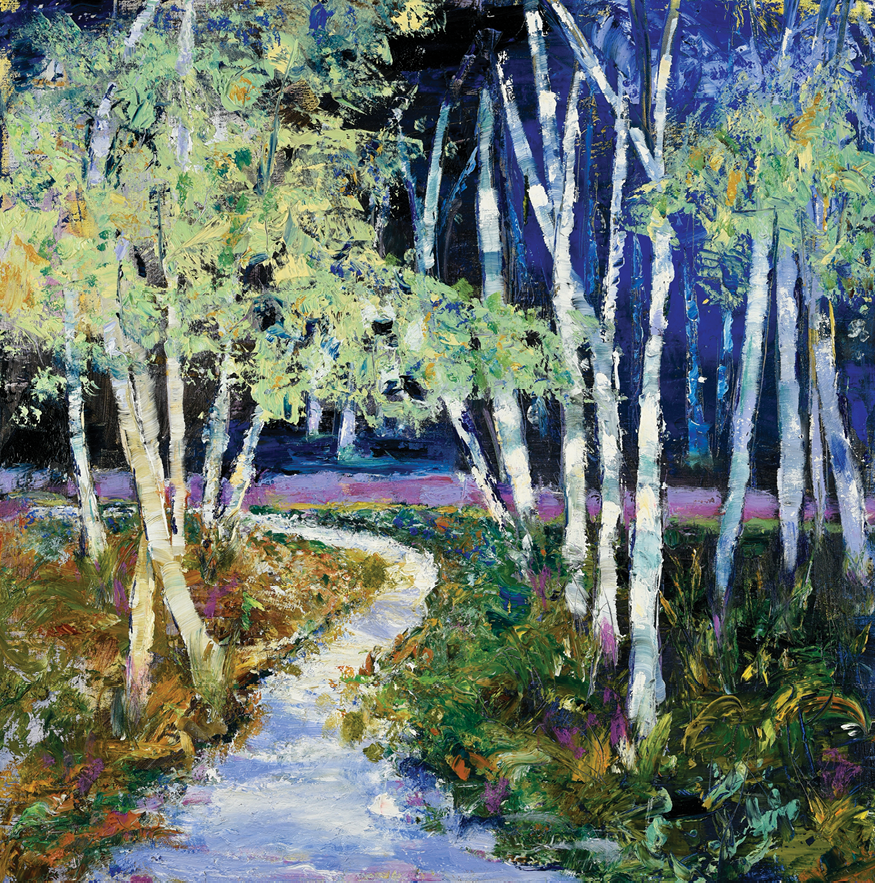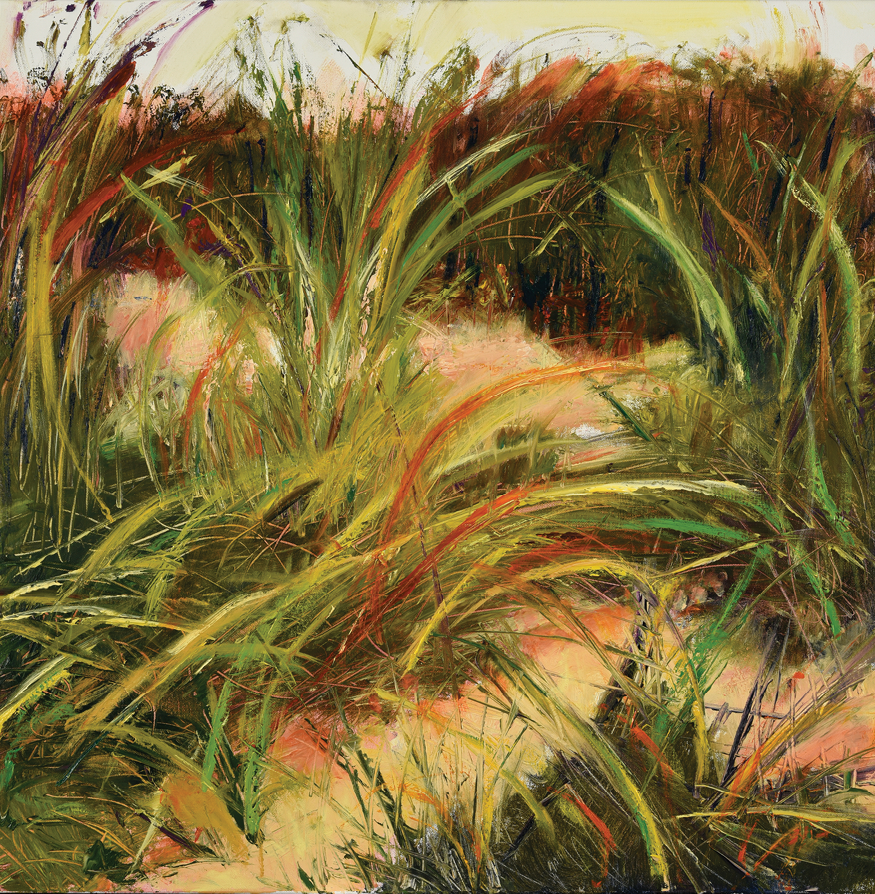- Home
- Media Kit
- Current Issue
- Past Issues
- Ad Specs-Submission
- Ad Print Settings
- Reprints (PDF)
- Photo Specifications (PDF)
- Contact Us
![]()
ONLINE
![]()
ONLINE

Expressionist Painting
How do you define expressionist painting and what attracted you to this type of painting?
Expressionist painting is so difficult and personal. I look for those perfect moments and special settings when the light is right, I am there and the vista offers a great gift. Expressionist painting cannot be defined. It is an experience. The painter uses resource materials, photos, nature, the outdoors and more to be inspired by the colors, the movement, the atmosphere. My painting is less a process of copying the world around me than a poetic exercise to show how I feel about the subject. I absorb the visual information which is blended with my past artistic experience, knowledge and all the paintings I have studied – it seems to flow through my hands to the canvas. It will tell a story and be an expression of my subject. The colors I paint are my joy and the gesture of the painting is my passion.
I frequently say to myself: emotion-in, emotion-out; energy-in, energy-out. As an expressionist painter, I deal with one thing – the emotion created in the painting. You see a tree, but the painter wants you to know how the artist feels about the tree. I want people to feel the way I do about nature, to stop and look and appreciate it, to fall in love with it again.


A Field of Birch Trees
Oil on canvas, 30 x 30 inches (2020) - above
Reeds and Grasses by the Shore
Oil on canvas, 30 x 30 inches (2020) - right
Marvelous Organic Shapes
Oil on canvas, 36 x 48 inches (2017) - below

Where do you find the inspiration for your work?
The whole world is my visual inspiration: spring green leaves against very blue skies… sun reflecting off houses of a distant shore… sun-dappled shadows below a tree….interplay of trees down the lane – all of this sends me to my studio.
There is another kind of inspiration and sometimes it is to champion a cause. My first five shows in Paris and subsequent U.S. shows are dedicated to drawing awareness to climate change. Mostly I enjoy painting giant leaves, grasses, reeds and trees. With our current pandemic and the horrible number of lives lost, climate change has taken a back seat at this moment. However, we have had quite a few warning signs about climate change this year – 30 named hurricanes, 13 major hurricanes made landfall in the Southern coast of the U.S., wildfires ravaged the West Coast, and there were over 200 other devastating weather-related incidents in the world. We may see our shorelines flooded, animals and birds endangered. If my paintings can help in a small way to communicate the problem, I want viewers to fall in love with nature again and commit to do their part on climate change. It is my hope that my concerns about the environment are contagious.
“As an expressionist painter,
I deal with one thing – the emotion created
in the painting.”
Will you discuss your support of charities?
We support many charities. It is a way of being thankful for what we have been blessed. My earliest and longest running relationship with a charity is with Family Centers in Greenwich and Lower Fairfield County, Connecticut. My most innovative charity relationship is with the Institute of International Education (IIE) and the Janet Hennessey Dilenschneider Scholar Rescue Program in the Arts. This is the first program to bring endangered artists from repressed countries to universities where they can continue their work in safety.
I sit on the board of the Connecticut Arts Council where there is great concern that the arts will be minimized after the pandemic, both financially and support wise. Our current endeavor is to highlight the place of the arts in our society and the importance of people enjoying art and music. The arts are a record of our history and culture through time. From the Egyptian pyramids to the Greek Parthenon to the more recent Impressionists, the arts are an ambassador from one culture to another. The arts communicate through their beauty and inspiration to all. They are never political.
Education of the young in the arts, both fine arts and music, teach experimentation and the creative process. For example, the creative process applied to technology has produced some extraordinary results that have enhanced and modified everyone’s daily life. Creativity increases our ability to analyze and solve problems which is useful for everyone.
The arts are essential to most people’s lives and happiness. Creativity is something for which Americans are known. We do not want to lose our valuable asset.
My goal in all of my work is to encourage a quiet call to action and to deliver a plea to protect the arts and environment which are increasingly threatened.![]()